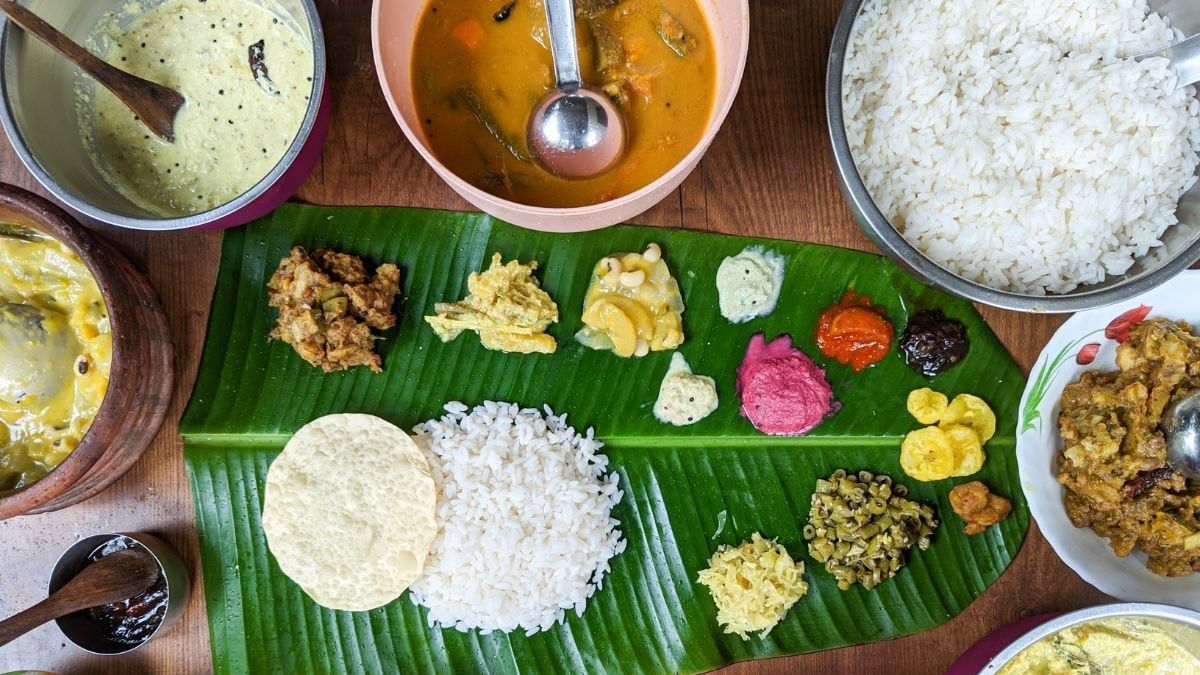Last week, the National Institute of Nutrition (NIN), a research body under the ICMR, came out with a set of dietary guidelines for Indians, addressing the twin problems of malnutrition and the growing burden of non-communicable diseases like diabetes. and hypertension.
In the NIN balanced diet plan, 45 percent of calories should come from cereals and millets, 15 percent from legumes and legumes, and the rest from fruits, vegetables, nuts and dairy products. Your 'My Plate of the Day' has 500 grams of vegetables and fruits. Reportedly, more than 80 percent of Indians do not follow this plan, which means poor nutrient intake.
Indians would do well to consider the ICMR's advice on nutritional needs. It's also time to review some dietary principles from Ayurveda, the ancient Indian system of health and longevity and sister science to Yoga.
THE NUANCED FOOD PLATE OF AYURVEDA
Ayurveda offers broad dietary guidelines, but with a difference. Here, more than the food itself, what we are able to digest is more important.
Digestion differs for each person, depending on their unique mind-body constitution. This constitution is formed by the proportion of the three doshas or humors: vata, pitta and kapha – which are present in everyone. The proportions determine what is best for us. Digestion also varies depending on the time of day (agnithe digestive and metabolic fire is greater at noon), the season and the place of habitation in addition to the condition of the body.
Again, in our mind-body system, food has an effect on mental health. Our predominant dosha decides whether we will be anxious, angry or calm. Respectively, vata dosha (which is dry, brittle and cold) needs warm, moist and ground foods; Pita (spicy and spicy) needs lightly seasoned, refreshing and astringent foods; kapha (heavy, cold, fatty) needs hot, dry foods. These factors make Ayurveda's 'My Dish of the Day' variable and more nuanced.
“We can easily restore health by adopting good habits and not going against Nature and our own nature. It is never too late to change habits, knowing that they are harming us,” says Vaidya Purnima Midha, a New Delhi-based Ayurvedic doctor with over 25 years of experience. She shares insights on Ayurvedic dietary guidelines, based on the Ayurvedic text 'Ashtanga Hrudaya', compiled by sage Vagbhata in 500-600 CE. Here are edited excerpts from an interview:
AYURVEDA DIETARY GUIDELINES
The diet must adapt to our constitution, to our Prakriti.
We have the three 'moods' (vata, pitta, kapha) in different proportions. “I was born with a constitution with a certain proportion of doshas. Foods that aggravate these doshas will cause problems and illnesses. If I can control the symptoms that aggravate my disease through selective and personalized nutrition, isn't that fantastic?” says you Purnima.
A meal should include the six flavors, the Shad-rasa
This helps avoid imbalances or deficiencies. These six tastes are mature (sweet), amla (sour), Lavender (salty), Katu (bitter or spicy), tikta (spicy) and kashaya (astringent). Start the meal with a sweet, ground and heavy; Being high in calories, it takes longer to digest, so it is eaten first. It also helps put out the raging fire of hunger and this prevents overeating. Amal (sour) works as an appetizer. Lavana is the quality of most of the food (roti, vegetables, dal, rice). Each subsequent course balances the effects of the previous ones: Madhura, Amla, Lavana Reduce the intensity of hunger. Katu, Tikta and kashaya destroy kapha dosha; Madhura, Tikta and kashaya destroy Pitta dosha.
Freshly cooked food has energy, prana, intact.
Preferably eat it within half an hour after cooking or juicing it, as prana – vital force – which gives energy and health decreases over time. Eat fresh produce from farms. Avoid leftover food for the same reason: it fills you up, but you lack energy.
When we eat it matters, Dinacharya and Ritucharya
Lunch should be the heaviest meal, when the agni is strongest. Body rhythms are aligned with the rhythms of nature. 10am-2pm is 'Pitta kaal' i.e. when Pitta dosha predominates, sunlight is maximum and hunger is also at its peak.
Heat is needed for digestion, so eat well and that is digested well. At other times of the day, this heat – pitta – is not available. Dinner should be light and the closer to sunset the better. Eating pizza for breakfast will put out the digestive fire; so will cold drinks taken with meals.
The proportion of the three humors varies during different times of the day, in different situations and in different seasons. Consequently, it will be necessary to vary the intake of food and drinks. For example, a coolant such as sherbet will help calm an angry and anxious person before a midday exam or interview; On the contrary, a spicy lunch will agitate you.
Not everyone can digest vegetables and fruits.
Seasonal vegetables and fruits are more available and easier to digest. The soups are good, especially the clear vegetable ones. The rider, however, is the internal condition, that is, digestion. Not all bodies may be able to digest a variety of vegetables together. Similarly, it may be summer but if you have a weak belly you cannot eat mango, a seasonal fruit. Mangos are very nutritious, but because they are fibrous and produce heat, they work as laxatives.
Again, what is good for the same person in America may or may not be good for him in India. For example, in the United States people can stomach soups and salads for dinner. The climate is an important factor. Salads are a big no in India during summers and monsoons, especially raw ones. The focus should be on the consumer and their capabilities, and not on the food per se.
Vessels and utensils to fill deficiencies
Traditional Indian cookware included iron, copper, brass, and earthenware pans. These have their unique health benefits by enriching foods with minerals, but they also have individual rules and precautions for use. Drinking water was also stored in silver and copper vessels. In ancient times, eating dishes were made of brass, silver and even gold.












